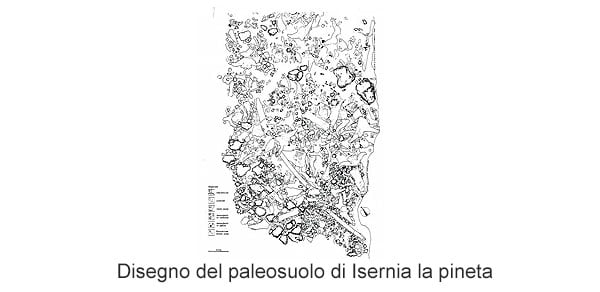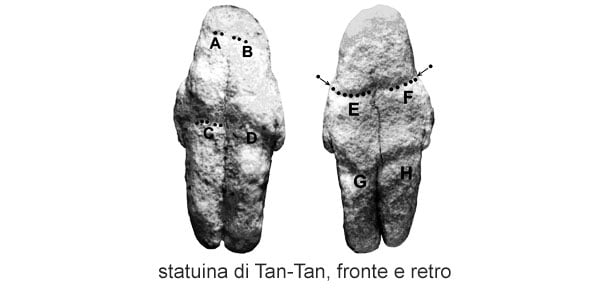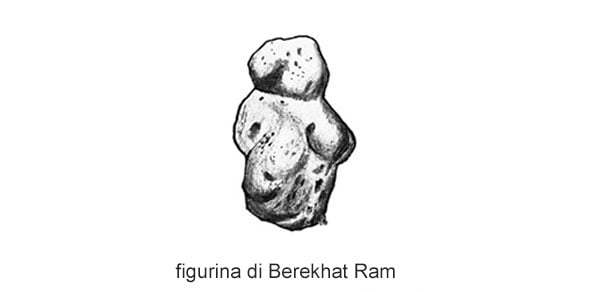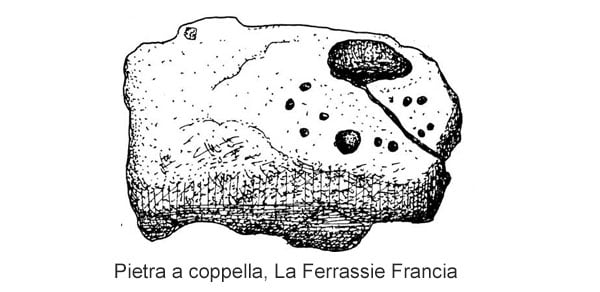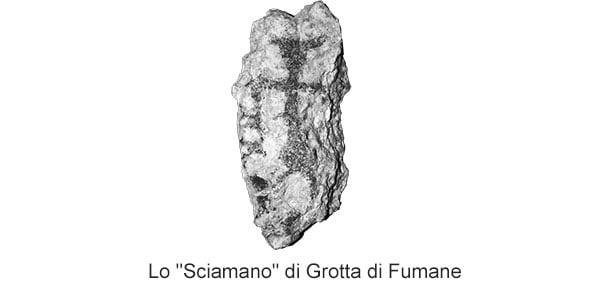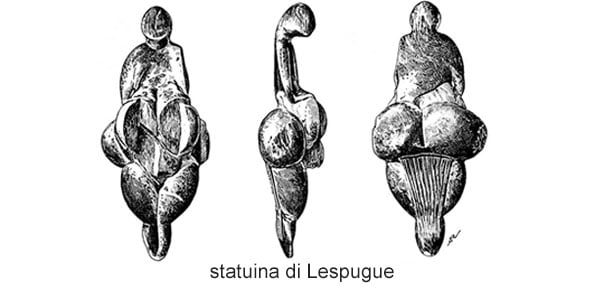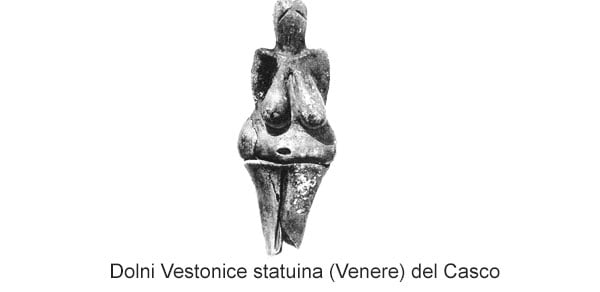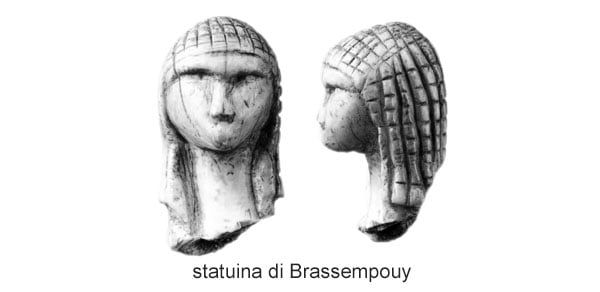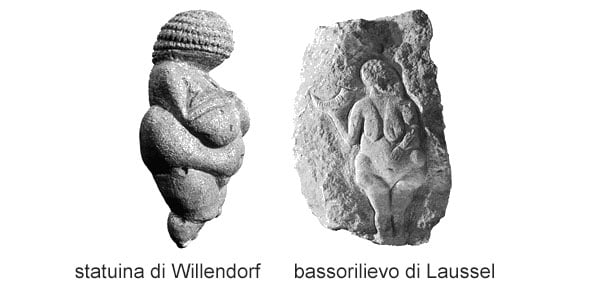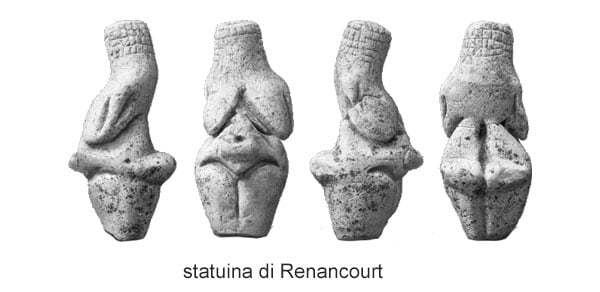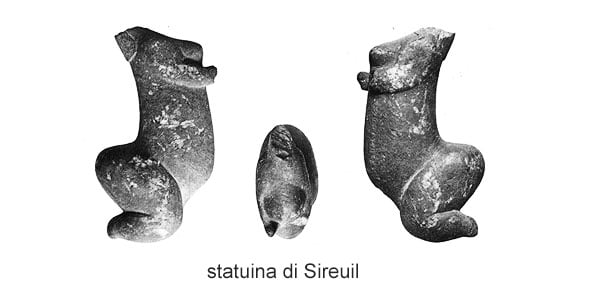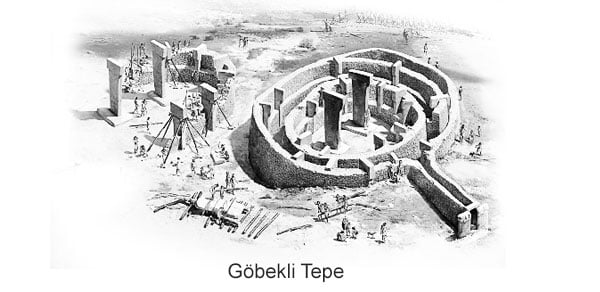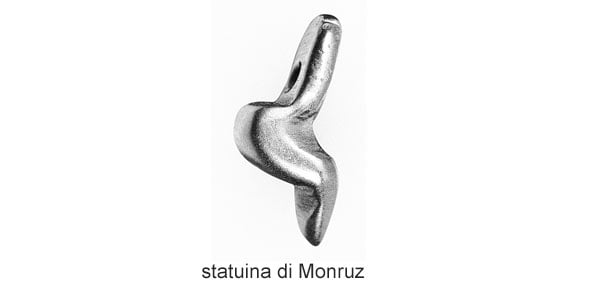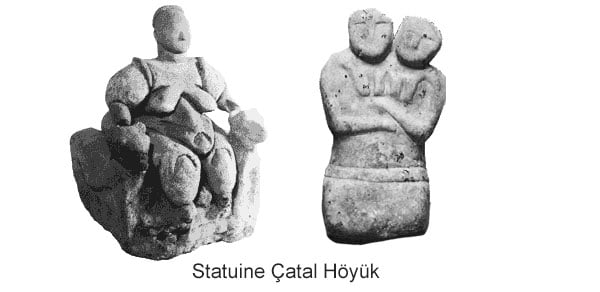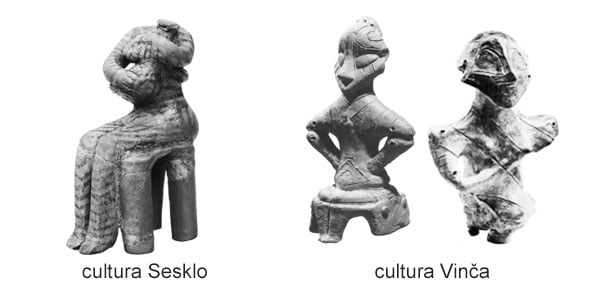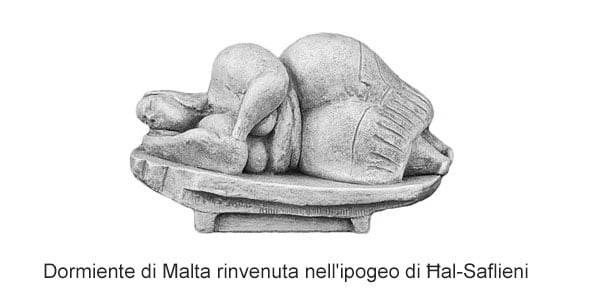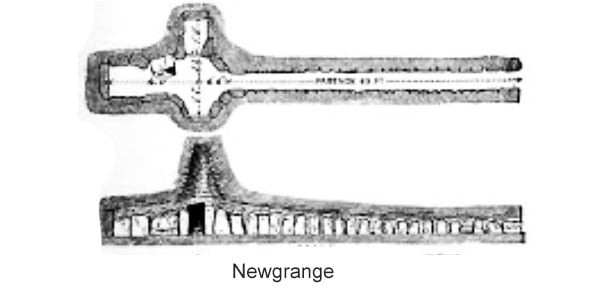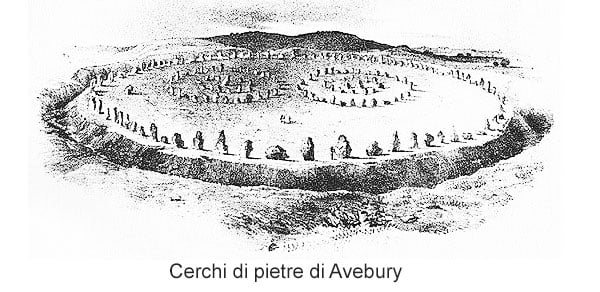Lower Paleolithic (7.000.000-120.000 BC)
Olduvaian (7.000.000-1.300.000 BC)
Early stone tools found for this period

Africa, Asia: collection of pebbles with red ochre, quartz crystals

Africa: traces of first use of fire

Early Acheulean (1.300.000-800.000 BC)
India: red ocher “pastels” with worn facets indicate ritual body or wall painting

Middle Acheulean (750.000-120.000 BC)
India: early rock art, Bhimbetka cup marks
South Africa, Spain, India, Russia and the Czech Republic: red ocher in ritual burials
Italy: in Isernia, in the La Pineta district, the oldest human settlement where Homo Aeserniensis lived, from the name of the locality

Morocco: Tan-Tan figurine in quartzite
France: first controlled use of fire by women

First artistic images
Germany, Spain, Crimea - first use of jewelry
Turkey, Germany: finely decorated handcrafted tools

Italy: in Rome, at the Saccopastore site, traces of the oldest Neanderthal community in Europe

Mitochondrial Eve: in Africa, in the common Ancestor from which we descend, the mitochondrial change takes place, transmitted through the maternal line up to us

Italy: Man from Altamura in Puglia, (Homo Neanderthalensis)

Middle Paleolithic (120.000-38.000 BC)
Upper Acheulean (120.000 – 68.000 BC)
Europe: Homo neanderthalensis spreads

Mycoquian (68.000–58.000 BC)
Australia: the red ocher “pastels” and the mola found in the rock shelter of Malangangerr in Arnhem Land, one of the proofs of the first human presence in Australia

Mousterian (58.000-38.000 BC)
Europe: Modern man spread from Eastern Europe to Western Europe

Upper Paleolithic (38.000-10.000 BC)
Aurignacian (38.000-27.000 BC)
Western Australia: petroglyphs in the Burrup peninsula and petroglyphs found in Hammersley, Pilbara

First artistic manifestations in Europe:
shell and bone beads involve the use of cords and threads
appearance of female symbolic motifs in Germany (Schelklingen mammoth ivory figurine, Hohle Fels cave, 38.000-33.000 BC) and Siberia

Austria: The Galenberg serpentine figurine is the first deliberately carved three-dimensional female sculpture

France: paintings in the cave of Chauvet-Pont-d'Arc
Linen and hemp used for clothes

Gravettian (27.000-18.000 BC)
France: cave paintings of Peche Merle and Cosquer attributable to Cro-Magnon man

Russia: Burial of three people wearing thousands of ivory beads
Italy: several figurines found in the Grotta del Principe at the Balzi Rossi, one on mammoth fang covered in a thick layer of red ochre, the figurine known as the Direct on flat oval dark green chlorite pebble, the figurine double in yellow serpentine and the Lozenge in green steatite
France: Brassempouy ivory figurine found in Aquitaine

Austria: Willendorf limestone figurine
statue of Savignanoin serpentine found in Savignano sul Panaro in Emilia Romagna
France: Laussel bas-relief on limestone, found in the Dordogne in the Abri Shelter of Laussel and painted in the Cougnac caves

Russia: Mal'ta ivory figurine found in Irkutsk Oblast
Slovakia: Moravany ivory figurine found in Zahorie

Levant: settled Natufian culture in the Levant region (traces of the beginning of the domestication of cereals and the dog)

France: Sireuil limestone figurine
bas-relief on stalactite, found in Frasassi in the Marche region, e statuette of Polycinelain green steatite, found in the Grotta del Principe at the Balzi Rossi

Solutrean (18.000-16.000 BC)
Australia: rock art, petroglyphs, at Cutta Cutta and Kintore, Northern Territory, and in Tasmania, Victoria and South Australia
Italy: important finds from Grotta del Romito in Calabria, including the Ox graffiti

Magdalenian (16.000-10.000 BC)
France: Lascaux cave cave paintings
Spain: cave paintings of Altamira
figurines of Parabitain horse bone found in Parabita, near Lecce in Puglia

Japan: two pebbles engraved with busts of women; perforated stone disc
China: Antlers engraved with meandering designs
France: graffiti with depictions of humans, animals, symbols such as meanders and fingerprints in the Rouffignac cave, in the Dordogne

Japan: Jomon culture, the first pottery
Africa: Tassili, paintings stylistically similar to the art of Lascaux and Altamira
Upper Galilee: burial of the Shaman of Galilee near Mount Carmel
Chiozza statue, in Emilia Romagna, built on a yellowish fine-grained river sandstone pebble, a common rock of the Emilian Apennines.
Cave of the Genoese, Levanzo (Sicily)
Turkey: Göbekli Tepe, the oldest "temple" in the world

Mesolithic (10.000-8.000 BC)
Switzerland: jet statue of Monruz, found in the canton of Neuchatel
Mesolithic figurine of the Shelter of Gabanin Trentino-Alto Adige, carved in bas-relief on a red deer horn support and Macomer figurinein local basaltic stone found in Macomer, in the province of Nuoro, Sardinia

Neolithic (8.000-5.000 BC)
Central Ukraine: Early sacrificial burials, including horses
Southern Russia: The Yamna people of the middle Volga steppes domesticate horses

Anatolia: Çatal Höyük, a sophisticated settled civilization
Turkey and Iran: very early metalworking; use of linen
India: numerous paintings and engravings

Europe: Cultures Sesklo and Vinča
statues of Favellaof the Court in Calabria and of Braccianoin green steatite in Lazio
Remains of female skeleton on Majella (Lama dei Peligni)

Italy: village of Raven Pass in Puglia the largest Neolithic village in Europe; terracotta figurines of Ripabianca of Monterado in the Marches and ceramic figurine of Pavolella cave In Calabria.

Denmark: naturalistic engraved amber bear

Italy: figurines of Gaban in Trentino-Alto Adige (the first made on deer bone plate and the second worked up boar's tooth) to terracotta figurine of Sammardenchia in Friuli-Venezia Giulia; in Central Italy culture of Ripoli; in southern Italy culture of Serra d'Alto

Early invasions of Europe by the Yamna warlike peoples, now known as Proto-Indo-Europeans, from the Volga steppes of southern Russia
statue of Vicofertilein ceramic body, found in the burial of a woman in Emilia-Romagna.

Yugoslavia: Vinca culture ends

Yugoslavia: three clay tablets with the first writing
Anatolia: Catal Huyuk is abandoned

Italy: in Sardinia we witness the birth and development of the culture of Bonu Ighinu

Copper Age (3.500-2.200 BC)
Finish the Sesklo culture
Second invasion of Ancient Europe by the Maikop, warriors from the Pontic-Caspian steppes
Sumer: the first writing, the beginning of written history

Italy: the last manifestations of the Neolithic are located in Sardinia with the culture of Ozieri

Crete: Minoan period, city of Knossos

England: Avebury stone circles, including the Silbury Hill complex
Third invasion of Old Europe by the Yamna warrior people

Bronze Age (2.200-950 BC)
Ireland: Beaker people and the end of the Irish Neolithic period
Russia: chariot with spoked wheels

Iron Age (950-700 BC)
Italy: founding of Rome

During the first millennium, the culture of warriors and domination established itself permanently in the Mediterranean area. A different story begins, which keeps the fragments of previous cultures like small precious stones in a destructive amalgam that invades the whole scene
Inspired and reworked by The invisible women of prehistory, three million years of peace, six thousand years of war, Judy Foster – Venexia (January 11, 2019)


